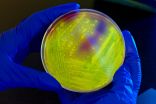(Press-News.org) New research published today in the journal Nature Communications represents a potentially fundamental shift in our understanding of how nerve cells in the brain generate the energy needed to function. The study shows neurons are more independent than previously believed and this research has implications for a range of neurological disorders.
"These findings suggest that we need to rethink the way we look at brain metabolism," said Maiken Nedergaard, M.D., D.M.Sc., co-director of the University of Rochester Center for Translational Neuromedicine and lead author of the study. "Neurons, and not the brain's support cells, are the primary consumers of glucose and this consumption appears to correlate with brain activity."
The brain requires a tremendous amount of energy to do its job. While it only represents 2 percent of the body mass of the average adult human, the brain consumes an estimated 20 percent of body's energy supply. Consequently, unravelling precisely how the brain's cells - specifically, neurons - generate energy has significant implications for not only the understanding of basic biology, but also for neurological diseases which may be linked to too little, or too much, metabolism in the brain.
Our digestive system converts carbohydrates found in food into glucose, a sugar molecule that is the body's main source of energy, which is then transported throughout the body via the blood system. Once inside cells, the mitochondria, which serve as tiny cellular power plants, combine these sugars with oxygen to generate energy.
Unlike the rest of the body, the brain maintains its own unique ecosystem. Scientists have long believed that a support cell found in the brain, called the astrocyte, played an intermediary role in the supplying neurons with energy. This theory is called the lactate shuttle hypothesis.
Scientists have speculated that the astrocytes are the brain's primary consumer of glucose and, like a mother bird that helps its chicks digest food, these cells convert the molecules to another derivative (lactate) before it is passed along to the neurons. Lactate is a form of sugar molecule that is used by mitochondria for fuel.
"The problem with the lactate shuttle hypothesis is that by outsourcing lactate production to astrocytes, it places the neuron in a dangerous position," said Nedergaard. "Why would neurons, the cell type that is most critical for our survival, be dependent upon another cell for its energy supply?"
The new research, which was conducted in both mice and human brain cells, was possible due to new imaging technologies called 2-photon microscopy that enable scientists to observe activity in the brain in real time.
Using a glucose analogue, the researchers found that it was the neurons, and not the astrocytes, that directly take up more glucose in the brain. They also found that when stimulated and more active, the neurons increase consumption of glucose, and when the mice where anesthetized, there was less neuronal uptake of glucose. On the other hand, the uptake of glucose by astrocytes remained relatively constant regardless of brain activity.
On the cellular level, the researchers observed that the neurons were doing their own job of converting glucose to lactate and that an enzyme that plays a key role in the creation lactate, called hexokinase, was present in greater amounts in neurons compared to astrocytes.
These findings have significant implications for understanding a host of diseases. The overproduction of lactate can result in lactic acidosis, which can damage nerve cells and cause confusion, delirium, and seizures. In stroke, lactate accumulation contributes to the loss of brain tissue and can impact recovery. Neuronal metabolism also plays an important role in conditions such as Alzheimer's and other neurodegenerative diseases.
Recent research has shown that inhibiting the transport of lactate between cells can reduce seizure activity in mice. However, much of this prior work has assumed that lactate was produced by astrocytes and that neurons were passive bystanders. The new study brings into question these assumptions by showing that neurons consume glucose directly and do not depend on astrocytic production and delivery of lactate.
"Understanding the precise and complex biological mechanisms of the brain is a critical first step in disease-based research," said Nedergaard. "Any misconception about biological functions - such as metabolism - will ultimately impact how scientists form hypothesize and analyze their findings. If we are looking in the wrong place, we won't be able to find the right answers."
INFORMATION:
Additional authors include Iben Lundgaard, Boaman Li, Lulu Xie, Hongyi Kang, Simon Sanggaard, John Haswell, Wei Sun, Siri Goldman, Solomiya Blekot, Michael Nielsen, Takahiro Takano, and Rashid Deane, all of whom hold positions at either the University of Rochester or the University of Copenhagen. The study was funding by the National Institute of Neurological Disorders and Stroke and the Novo Nordisk Foundation.
(April 15th, 2015) Coeliac disease is one of the most common life-long conditions in Europe, yet many people remain undiagnosed and lengthy diagnostic delays may be putting lives at risk. Today, doctors are being urged to consider testing for Coeliac disease in anyone showing signs and symptoms of the condition and to consider screening everyone in high-risk groups.
A paper published in this month's special Coeliac disease (CD) issue of the UEG Journal assessed the viability of screening for CD in the general population and concluded that screening of first-degree relatives ...
April 24, 2015 - A simple method of testing "twilight vision" gives reliable results in identifying people who have decreased visual acuity under low light conditions, according to a study in the May issue of Optometry and Vision Science, official journal of the American Academy of Optometry. The journal is published by Wolters Kluwer.
Using filters to test at a light level 100 times lower than for daylight visual acuity testing, vision care professionals can obtain "reliable and repeatable" measurements of twilight vision, report Jason S. Ng, OD, PhD, and colleagues ...
MAYWOOD, Il. - The recent Great Recession was accompanied by a significant and sustained increase in major depression in U.S. adults, according to a Loyola study published in the Journal of Clinical Psychiatry.
Prevalence of major depression increased from 2.33 percent during the years 2005-2006 to 3.49 percent in 2009-2010 to 3.79 percent in 2011-2012, according to the study by Loyola University Chicago Stritch School of Medicine researchers.
Prevalence of less-severe depression increased from 4.1 percent in 2005-2006 to 4.79 percent in 2009-2010, but then declined ...
Leesburg, VA, April 24, 2015--Digital breast tomosynthesis (DBT) increases the rate of cancer detection in women with dense breast tissue by as much as 67%, according to new research from the Einstein Medical Center in Philadelphia.
"There are a lot of data showing that screening with DBT increases cancer detection, but much less is known about the effect of density and lesion type on detection rates," said coauthor Caroline Ling. "We found a striking increase in detection among women with dense breasts called back for mass and asymmetry relative to nondense breasts."
The ...
Functional analysis of a cell, which is the fundamental unit of life, is important for gaining new insights into medical and pharmaceutical fields. For efficiently studying cell functions, it is essential to reconstruct cellular microenvironments by parallel manipulation of single cells. Various cell manipulation techniques including fluidic, optical, and electrical techniques have been developed.
However, all these techniques lack flexibility with respect to changes in the cellular types, number, and places. In addition, the manipulations, which have been conducted in ...
While seeking targets to attack Huntington's disease, an incurable inherited neurodegenerative disorder, neurobiologists of the research group led by Professor Erich Wanker of the Max Delbrück Center for Molecular Medicine in the Helmholtz Association found what they were looking for. Using a filtering strategy borrowed from criminologists, the researchers systematically filtered interaction networks of various biological databases. In several steps, they increasingly narrowed down their search until they ultimately found the protein (CRMP1). In subsequent lab experiments ...
Dropping off a child at kindergarten for the first time can be one of the most memorable yet terrifying experiences of parenthood. Among the many concerns parents face is the worry whether your child will make friends - a key factor, research shows, in reducing anxiety, depression and the likelihood of being bullied.
For parents of children with disabilities, the concern is even greater as four-out-of-10 of their children will enter kindergarten without the social skills necessary to develop close friendships. The response from schools has been to create inclusive classrooms, ...
A new technique that identifies how genes are controlled could help scientists spot errors in the genetic code which trigger disease, a study suggests.
The method focusses on those parts of DNA - known as enhancer regions - which regulate the activity of genes and direct the production of proteins that have key functions within the body.
Errors in protein production can result in a wide range of diseases in people, researchers say.
The new method could help researchers pinpoint the source of disease-causing mutations in enhancers. Until now, these genetic errors ...
ANN ARBOR, Mich. -- Nearly half of American hospitals aren't taking key steps to prevent a kind of gut infection that kills nearly 30,000 people annually and sickens hundreds of thousands more - despite strong evidence that such steps work, according to a new study.
While nearly all of the 398 hospitals in the study use a variety of measures to protect their patients from Clostridium difficile infections, 48 percent haven't adopted strict limits on the use of antibiotics and other drugs that can allow the dangerous bug to flourish, the researchers report.
Hospital ...
This news release is available in German. The world is a risky place. But our subjective fears and anxieties are often at odds with the evidence. New findings by scientists at the Max Planck Institute for Human Development and the University of Konstanz show that subjective fears about potential risks may be amplified in social exchange. Their findings have now been published in the journal Proceedings of the National Academy of Sciences (PNAS).
In our information society, information about risks such as Ebola and measles can spread like wildfire - be it through ...


